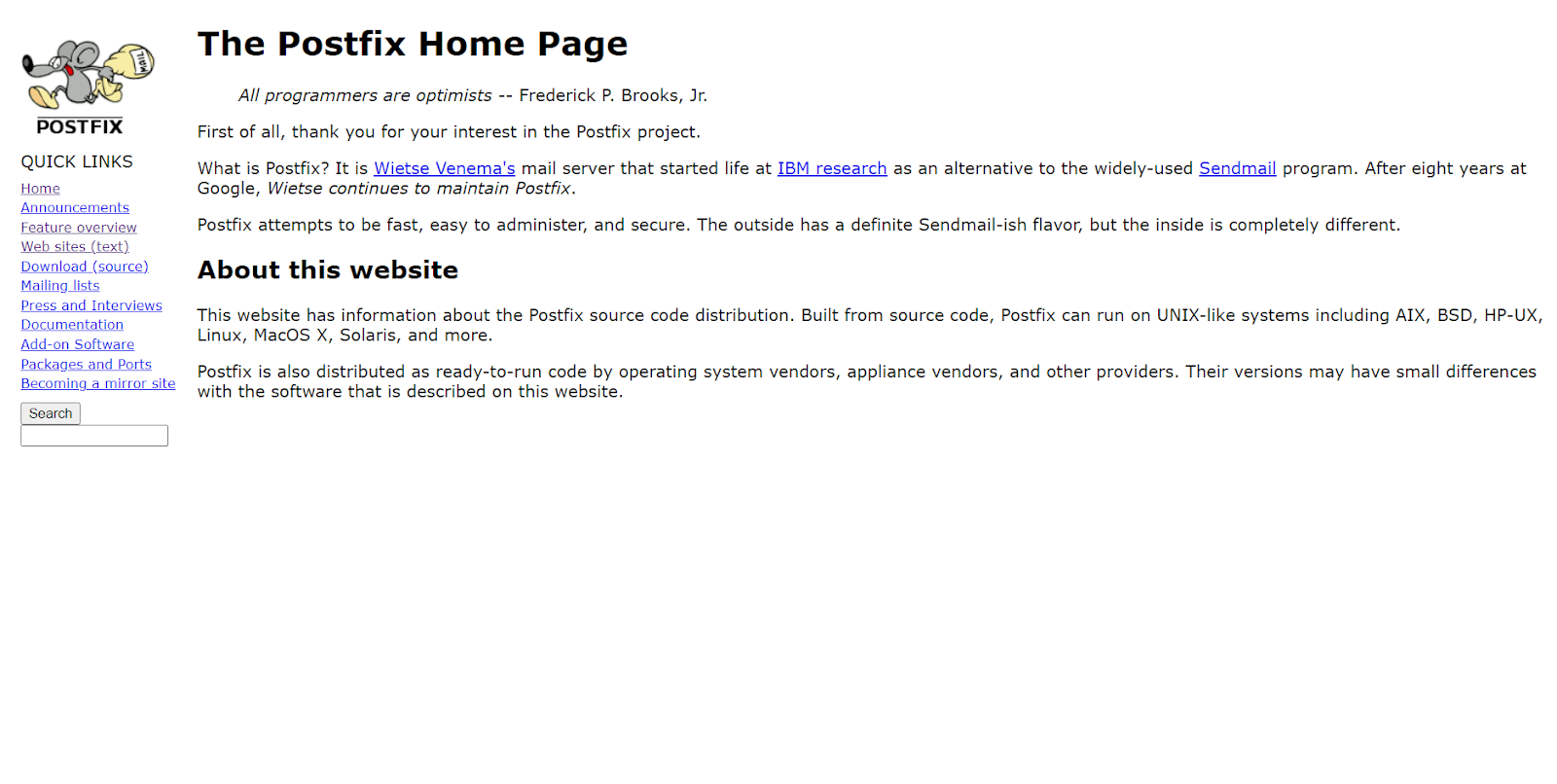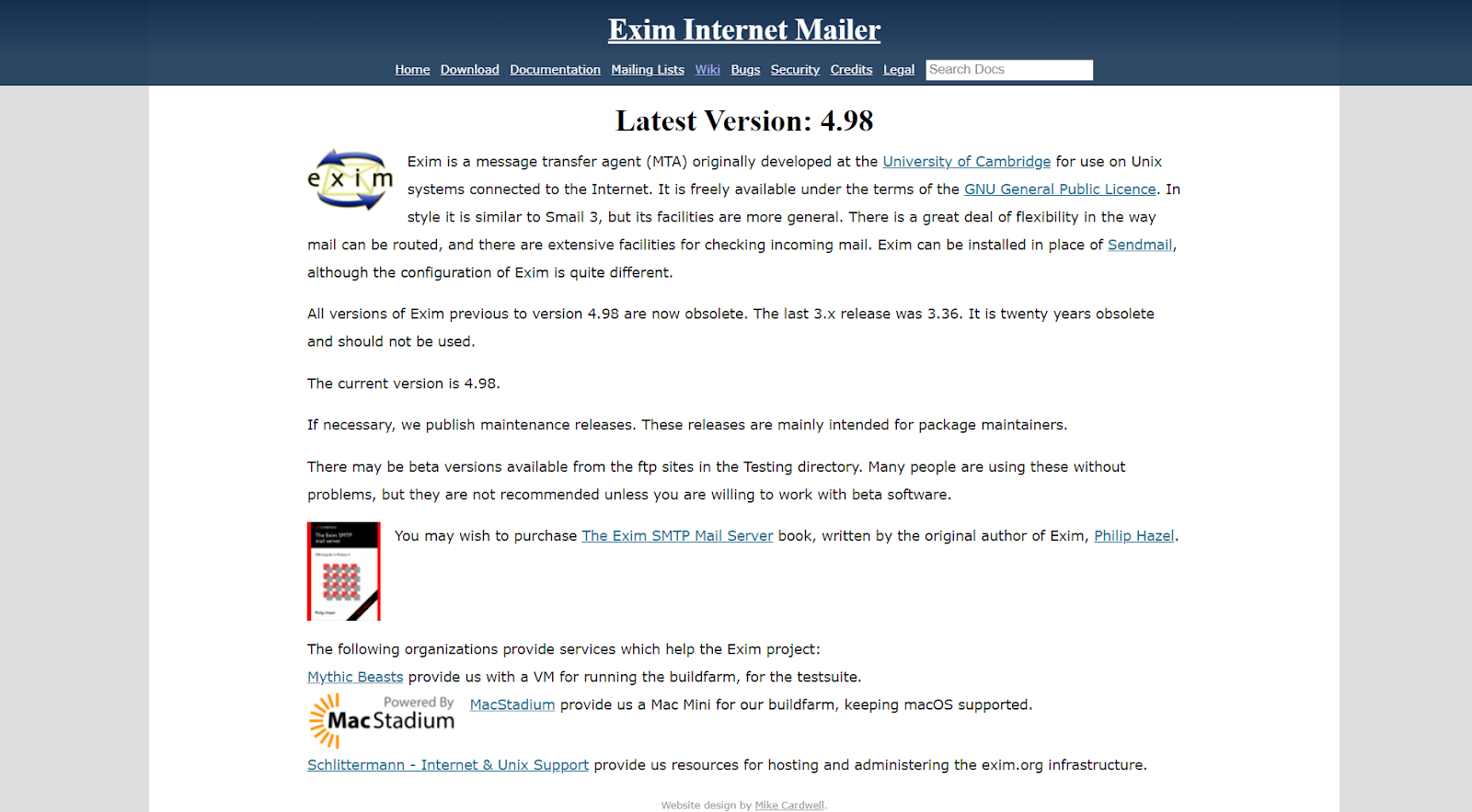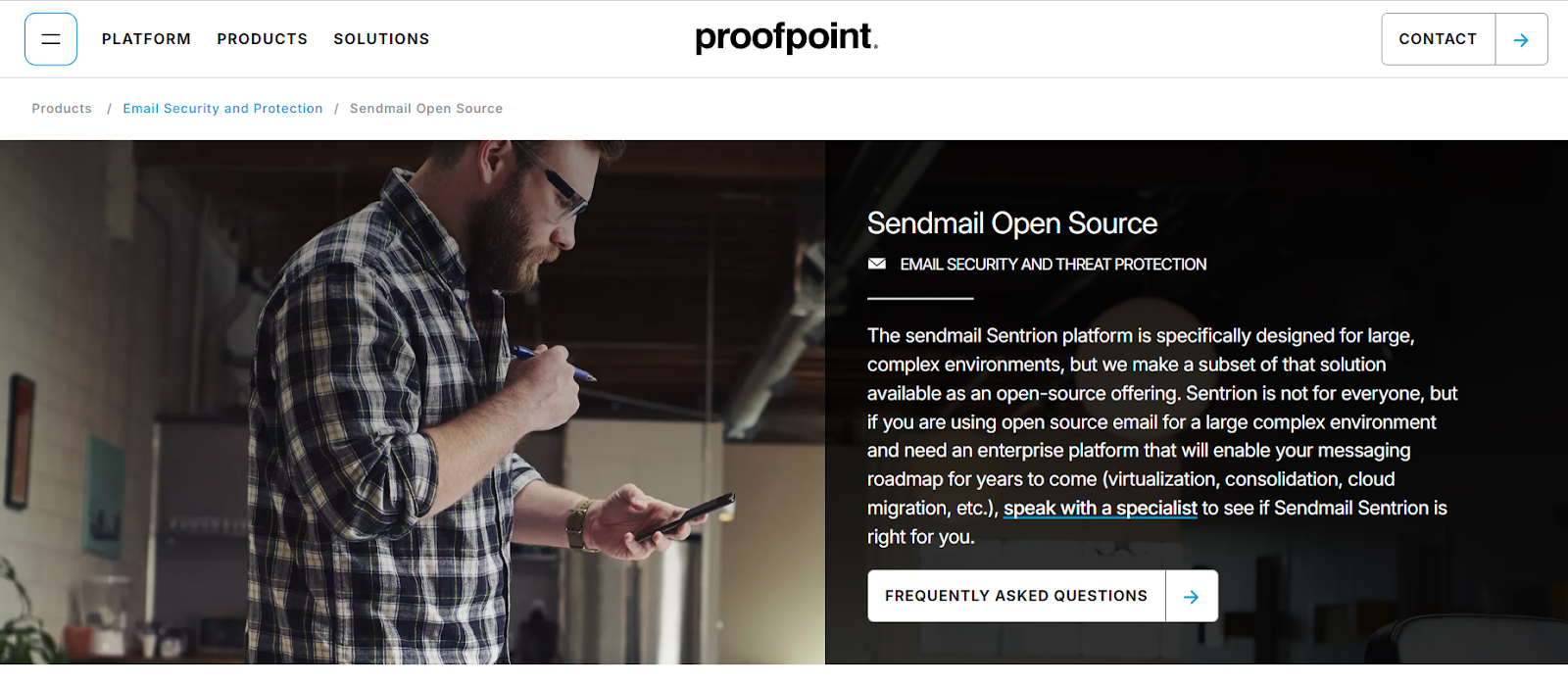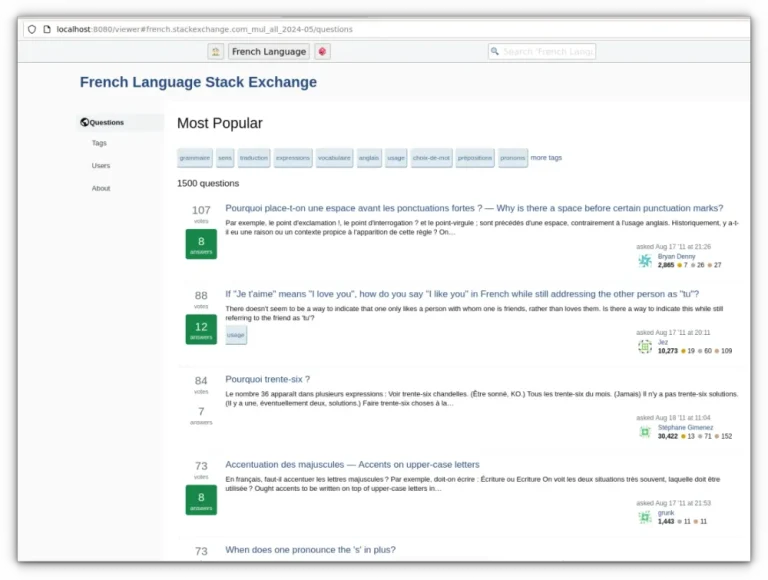Exim isn’t a Mail Transport Agent, so there are some features that you won’t get. For example, it will not store emails and doesn’t support IMAP or POP protocols. However, it can deliver messages to mailstores that do, either using SMTP or LMTP message delivery or, in some cases, by saving messages directly into mailboxes.
Table of Contents
- 1 What are Mail Transfer Agents?
- 2 Comparing Postfix vs. Exim vs. Sendmail Email MTA
- 3 What is Exim?
- 4 What is Sendmail?
- 5 Postfix vs. Sendmail vs. Exim – Feature Comparison Table
- 6 Wrapping Up – Which Transfer Agent Should You Choose: Postfix, Exim, or Sendmail Mail?
- 7 FAQs on Mail Transfer Agents
- 7.1 Does Sendmail need an SMTP server?
- 7.2 Does PHP use Sendmail?
- 7.3 What is the main difference between postfix and prefix operators?
- 7.4 What are the two roles of Simple Mail Transfer Protocol?
- 7.5 What is the message transfer agent SMTP?
- 7.6 What are the two types of user agents in email?
- 7.7 What is the difference between MTA and MUA?
What are Mail Transfer Agents?
Suggested read: How to Send Email from PHP (With Guided Walkthrough)
How Do Mail Transfer Agents Work?
Suggested read: How To Resolve The “Email Address is Not Verified” Error With AWS SES
- Message Reception: When you send an email, the MTA first receives the message from your email client. It examines the recipient’s email address to determine where the message needs to go.
- Routing: The MTA then decides the best path to deliver the email. It uses Domain Name System (DNS) lookups to find the correct mail server for the recipient’s domain.
- Message Queuing: If the destination server is temporarily unavailable, the MTA doesn’t give up. It places the email in a queue and will attempt delivery multiple times over a set period.
- SMTP Protocol: Most MTAs use the Simple Mail Transfer Protocol (SMTP) to communicate between email servers. This is like a standardized language that ensures emails can be understood and transferred correctly.
- Delivery: Once the recipient’s mail server is reached, the MTA hands off the message to the Mail Delivery Agent (MDA), which places the email in the recipient’s mailbox.
Postfix is a powerful, open-source Mail Transfer Agent (MTA) designed to efficiently route and deliver electronic mail across complex network environments. It was designed to provide robust email routing capabilities while maintaining exceptional security standards. It is popular for its modular architecture, which allows system administrators to configure and customize email transmission with granular control and enhanced protection against potential security vulnerabilities.
Why are Mail Transfer Agents Required in Linux?
Mail Transfer Agents are essential in Linux systems for several reasons:
- Reliable Communication: MTAs ensure that emails are delivered reliably, even with network interruptions or temporary server issues. They can retry delivery and provide detailed error reporting.
- Security: Many MTAs include robust security features like spam filtering, virus scanning, and encryption support. Popular Linux MTAs like Postfix and Sendmail offer advanced security mechanisms.
- Flexibility: Linux MTAs can handle complex routing scenarios, support multiple domains, and integrate with various authentication methods.
A Mail Transfer Agent (MTA) is responsible for routing and delivering emails between servers using protocols such as SMTP, acting like a postal service for electronic messages. In contrast, a Mail User Agent (MUA) is the email client software that users directly interact with to compose, read, and manage their emails.
Comparing Postfix vs. Exim vs. Sendmail Email MTA
Postfix supports multiple operating systems, including AIX, BSD, Linux, MacOS X, and Solaris, which makes it a highly adaptable solution for diverse computing environments. It also ensures seamless communication across different email systems and supports advanced features such as SMTP authentication, encryption, and internationalized email addressing.
What is Postfix?
It also provides robust security features, including advanced access controls, spam filtering capabilities, and support for encryption protocols like TLS, which help protect email communications from unauthorized access and potential threats.Exim doesn’t have a Graphical User Interface (GUI) to help you configure it, but some Linux distributions add one. Various tools are available to give you graphical views of Exim’s mail queues, traffic, and logs.

If you send emails from your Linux server, you’ll need a Mail Transfer Agent (MTA) to process them, but choosing the right one can feel like navigating a complex technological labyrinth.
Pros of Postfix
Some organizations might find the initial setup and fine-tuning process time-consuming, especially when integrating Postfix with existing email infrastructure or implementing complex routing and filtering rules. The two primary types of user agents in email are the Mail User Agent (MUA), the email client interface users interact with (like Thunderbird or Outlook), and the Web-based Email User Agent, which allows users to access and manage emails through web browsers.
Cons of Postfix
Its monolithic design has been criticized for potential security vulnerabilities, as a single binary controls multiple email processing functions. The default configuration can be less secure if not carefully managed, and the learning curve for proper implementation is steep. Performance can be slower than that of more modern MTAs, and the configuration complexity makes routine maintenance and troubleshooting time-consuming. These limitations have led many organizations to migrate to more contemporary and user-friendly email transfer agents such as Postfix and Exim.Suggested read: Uptime Monitoring Tools: Why You Need Them, and What to Look forPHP can use Sendmail as a default method for sending emails on Unix and Linux systems by leveraging the built-in mail() function. The PHP configuration allows developers to specify the Sendmail path for email transmission, enabling seamless integration with the system’s mail transfer infrastructure.Suggested read: What are Linux Logs? What Are They & How To Use Them
What is Exim?
Whether you’re a startup looking to establish your first email infrastructure or an enterprise seeking to optimize your existing systems, understanding the nuanced differences between these Mail Transfer Agents is necessary to build an effective infrastructure.SMTP is not a message transfer agent but a communication protocol MTAs use to send and receive email messages between servers. It defines the rules and procedures for transmitting emails, ensuring consistent and reliable communication across different email systems.

Our platform simplifies server management, offering one-click DNS configurations, automated security updates, and intuitive monitoring tools that take the complexity out of infrastructure management.
Pros of EXIM
A Mail Transfer Agent (MTA) is like a digital postal service for email. It’s software in Linux systems that handles email message routing, delivery, and transmission across different computer networks. Think of an MTA as a specialized postal worker who knows how to pick up an email from one computer and deliver it to the correct destination, no matter how far away it might be.Ready to simplify your server management? Sign Up for RunCloud Today.Sendmail offers numerous advantages that have established its reputation in the world of email infrastructure. Its extraordinary flexibility allows system administrators to create highly customized email routing configurations, making it adaptable to complex network environments. Sendmail supports extensive configuration options through its powerful configuration file, enabling precise control over email processing, routing, and security mechanisms.
Cons of Exim
Exim is a mail transfer agent (MTA) used in Unix-like operating systems. The first version of EXIM was developed in 1995 for use in the University of Cambridge Computing Service’s e-mail systems. Exim is distributed under the GPL and is free to download, use, and modify.Exim is a highly versatile Mail Transfer Agent with robust message transport capabilities. It is an SMTP and LMTP email transport solution and provides comprehensive incoming and outgoing email handling mechanisms across multiple transport protocols. EXIM MTA supports RFC 2821 SMTP and RFC 2033 LMTP standards, enabling flexible message transmission through various methods, including TCP/IP, standard input/output, and daemon-based configurations.
What is Sendmail?
Despite its historical significance, Sendmail has several notable challenges that have prompted many organizations to explore alternative Mail Transfer Agents. The configuration process is notoriously complex, requiring deep technical expertise and extensive knowledge of its configuration syntax, which can be intimidating for less experienced system administrators.This question seems unrelated to Mail Transfer Agents and more like a programming concept. In programming, prefix operators modify a variable before its value is used, while postfix operators modify a variable after its current value is used.

Pros of Sendmail
Exim follows the Sendmail design model, where a single main binary controls all the MTA facilities. This monolithic design is considered by some to be inherently less secure and slower, but despite this, Exim’s security record is much better than Sendmail and comparable with Qmail and Postfix, as is its speed. In advanced areas such as queue handling, address routing, and testing, it exhibits excellent performance.Despite its numerous strengths, Postfix presents certain challenges that organizations must carefully consider during implementation. The configuration complexity can be intimidating for less experienced system administrators as it requires deep technical knowledge to fully leverage its advanced features and customize its numerous parameters effectively.
Cons of Sendmail
Sendmail is an established Mail Transfer Agent that has been used for email communication in Unix and Unix-like operating systems for decades. It has become the de facto standard for routing and delivering email across complex network environments. Postfix is the recommended solution for most scenarios as it offers an optimal balance between security, performance, and ease of configuration. However, if your organization works with legacy systems or complex email routing requirements, Sendmail remains a viable option, though it demands more advanced technical skills. Exim is also a good option for those seeking a highly customizable solution with robust routing capabilities.
Postfix vs. Sendmail vs. Exim – Feature Comparison Table
| Feature | Postfix | Sendmail | Exim |
| Open Source Status | Fully open-source, actively maintained | Open-source, less actively developed | Fully open-source, GPL licensed |
| Configuration Complexity | Moderate, more intuitive | High, complex configuration | Moderate to high, flexible but detailed |
| Security Model | Modular, security-focused design | Monolithic, historically more vulnerable | Flexible, strong security controls |
| Performance Scalability | High, efficient routing | Moderate, can be slower | Good, advanced queue handling |
| Database Integration | Extensive (LDAP, MySQL, PostgreSQL) | Limited native support | Moderate database connectivity |
Wrapping Up – Which Transfer Agent Should You Choose: Postfix, Exim, or Sendmail Mail?
Being open-source, Sendmail benefits from continuous community improvements and has robust support for various authentication methods, encryption protocols, and integration with modern security technologies. Its long-standing presence in the market means it has weathered numerous technological shifts and continues to provide reliable email transmission services for organizations worldwide.Additionally, it has a huge feature set, which can sometimes translate into increased resource consumption. This can potentially impact system performance on lower-powered hardware configurations.Suggested read: Using Mailgun To Send Transactional Email From WordPressAdditionally, its incoming server capabilities are particularly impressive, as it supports SMTP over multiple interfaces, including direct TCP/IP connections, inetd (internet service daemon) integration, and standard input processing. It also has advanced features such as encrypted and authenticated connections on specific ports like 587. EXIM also provides advanced routing controls that enable message redirection, quarantine, and delivery through multiple transport mechanisms.Sendmail is critical in managing email transmission by interpreting email addresses, determining the most efficient routing path, and ensuring messages reach their intended destinations across different computer networks.






